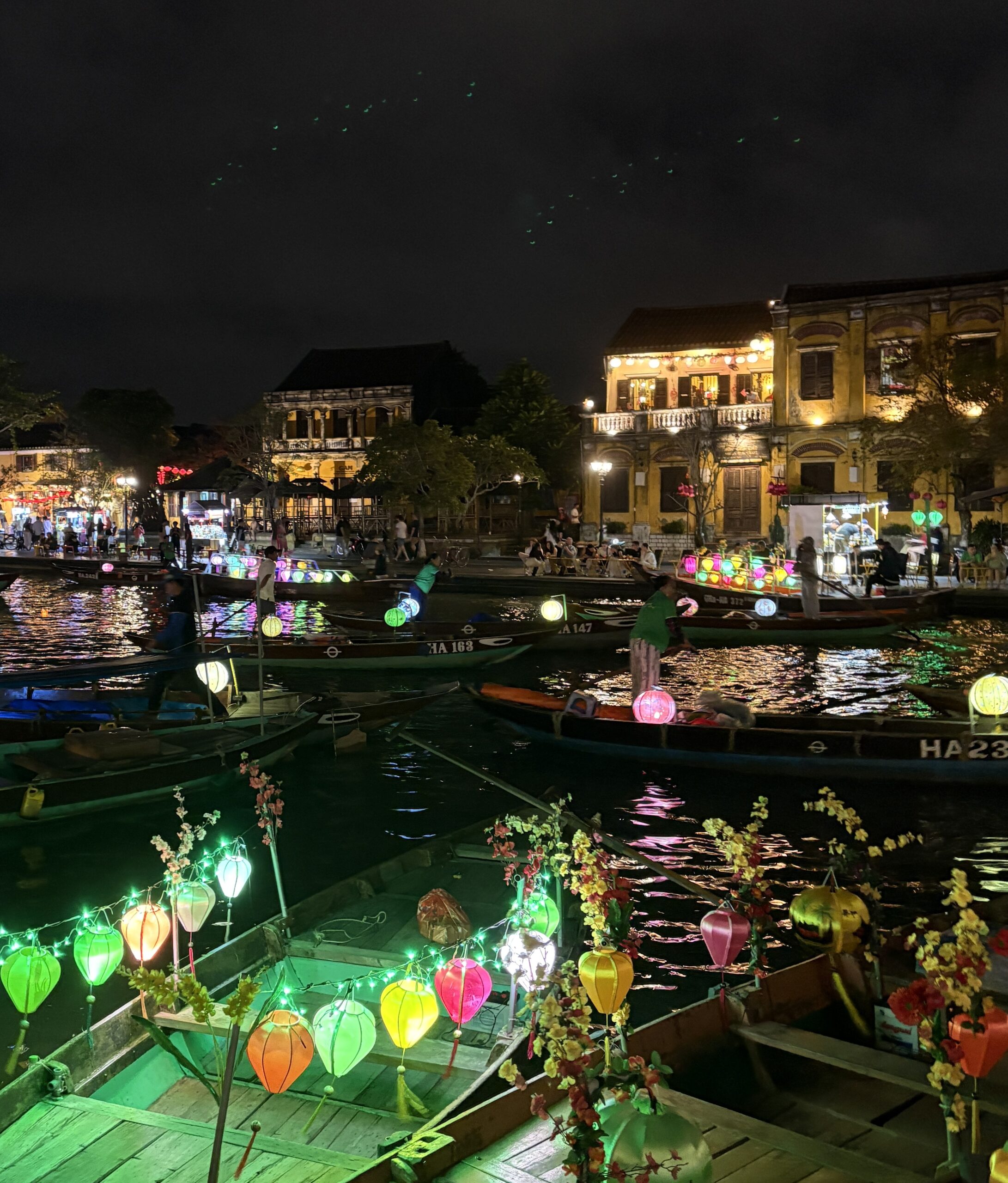19 Best Things to Do in Hoi An, Vietnam
Hoi An is one of those places that somehow lives up to the hype: lantern-lit alleys, riverfront magic, endless eats, and countryside that feels like it belongs on a postcard.
I’ve spent extended time here over several visits, and the list of things to do in Hoi An only seems to grow more every time I visit.
Whether you’re up at sunrise wandering the market, floating down the river at night, or riding through rice fields just minutes from the beach, Hoi An has a vibe that pulls you in fast and doesn’t let go.
This guide blends the best things to do with how I’d personally spend 3 perfect days in Hoi An.
It’s got history, charm, and just the right mix of laid-back and lively, with enough variety to keep anyone entertained, whether you’re a foodie, culture hunter, or beach-seeking introvert.
This list brings together the best Hoi An attractions, a few local experiences you might not find on every list, and plenty of ways to make your visit feel personal.
Ride Through Rice Paddies and Relax at An Bang Beach
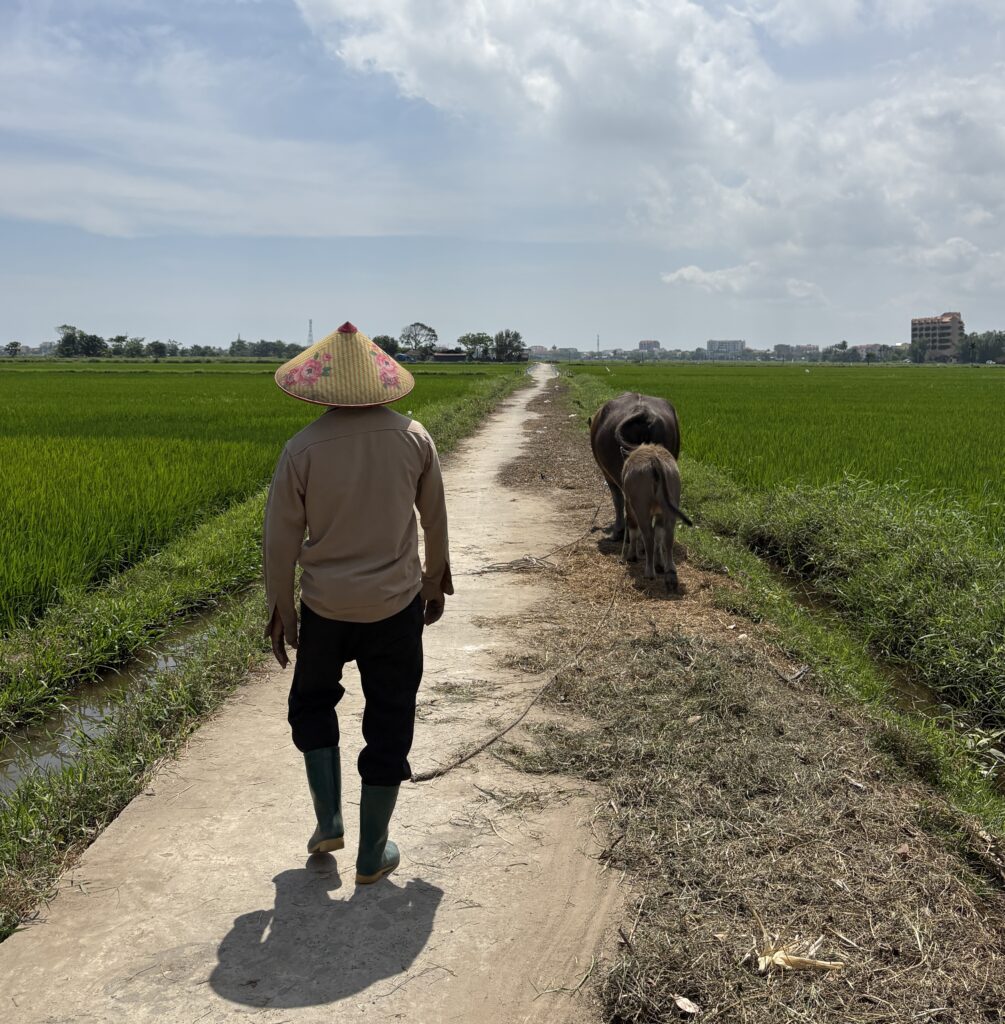
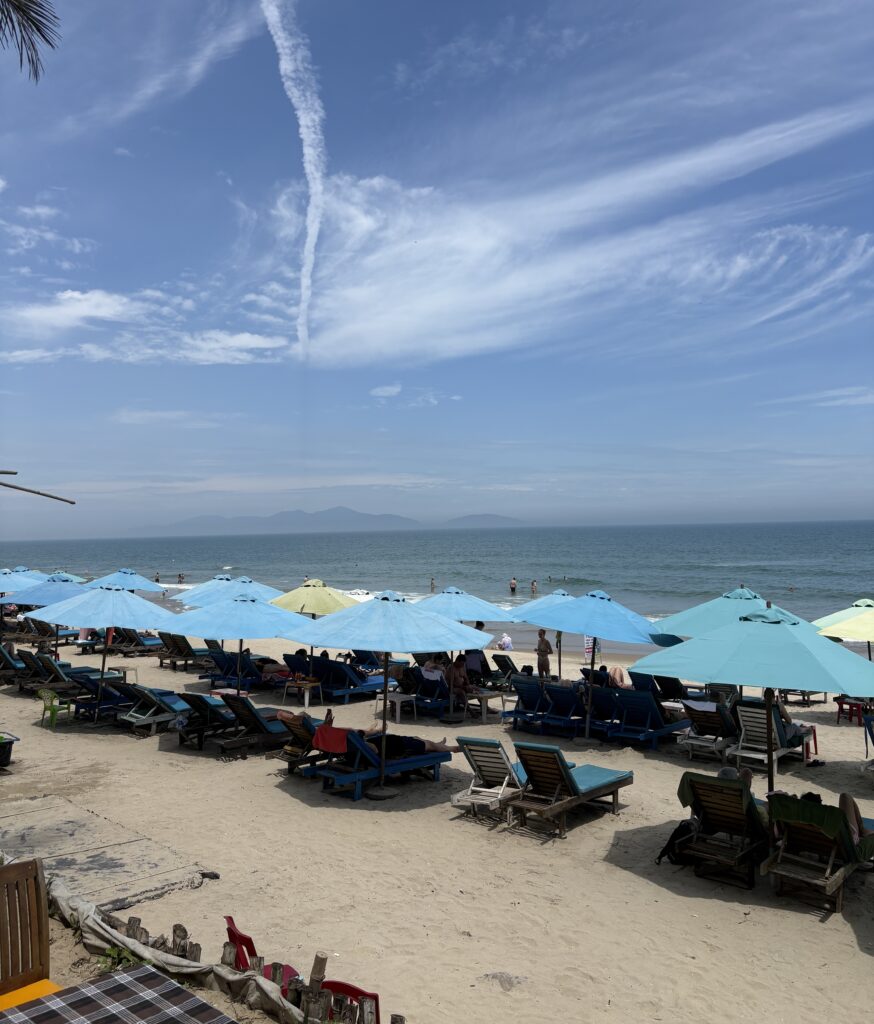
There’s something therapeutic about renting a scooter or bike and cruising through Hoi An’s emerald-green rice fields.
You’ll pass water buffalo, friendly locals, and scenery that feels like it hasn’t changed in generations. It’s also the perfect way to escape the crowds of the Old Town and see the real rhythm of life here.
The best part? These rural backroads lead straight to An Bang Beach, Hoi An’s chilled-out coastal strip.
It’s far less hectic than city beaches in Vietnam, and there’s no better reward after a ride than grabbing a coconut or a cocktail, kicking back in a lounger, and watching the waves roll in.
If you’re lucky, you’ll catch some locals playing volleyball or kids flying kites, especially around sunset. I’ve done this ride countless times, and it always lands in my top memories. It’s Hoi An at its best: peaceful, scenic, and just easygoing enough to slow you down.
Take a Vietnamese Cooking Class with a Local Chef
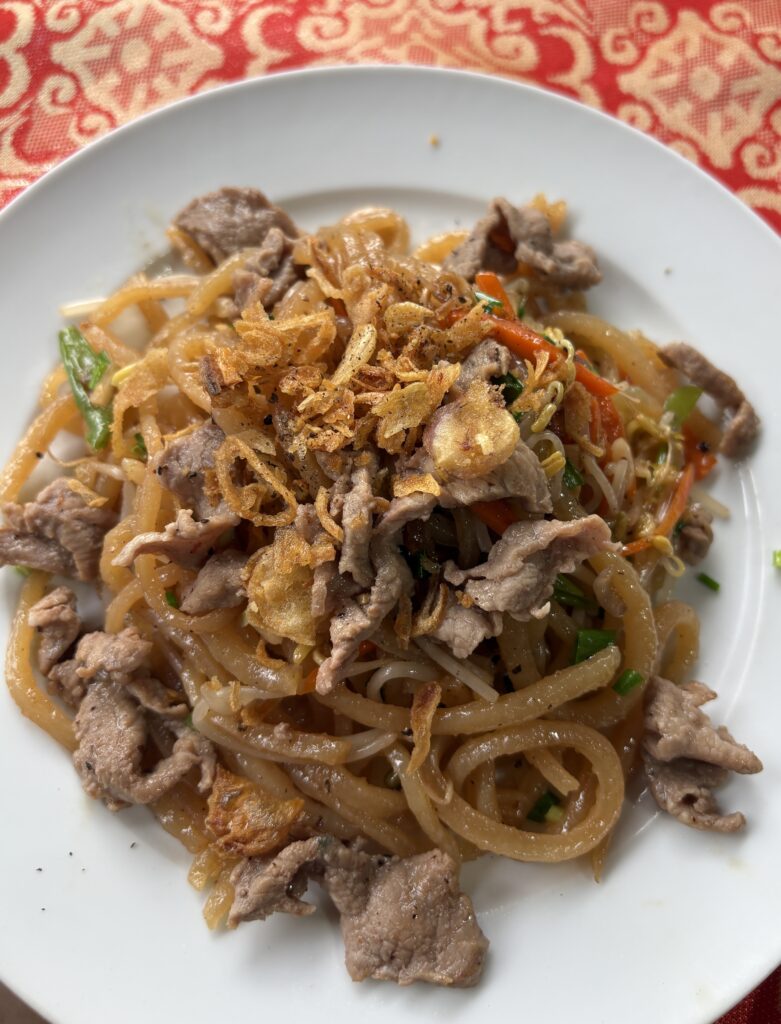
Hoi An is a food lover’s paradise, and one of the most rewarding ways to dive in is by joining a local cooking class.
You’ll usually start with a visit to a bustling market, where you’ll pick fresh herbs, vegetables, and fish, before heading back to a traditional kitchen to cook.
Expect to learn iconic central Vietnamese dishes, such as Cao Lau and white rose dumplings, and perhaps even master the perfect nuoc cham dipping sauce.
Some classes include a boat ride, while others feature a basket boat experience, and almost all include an abundance of food (not that anyone’s complaining).
If you’ve ever wanted to recreate your Hoi An trip in your kitchen back home, this is the activity that’ll help make that happen.
Explore the Ancient My Son Sanctuary Ruins
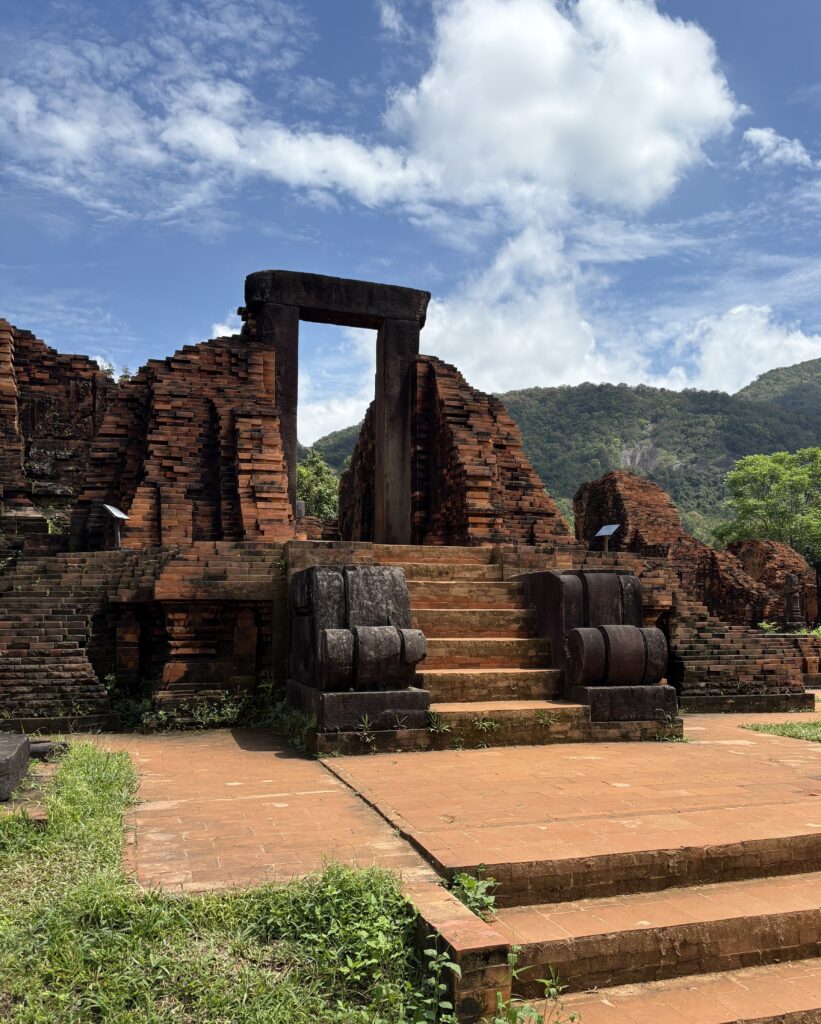
Roughly an hour outside of Hoi An lies My Son Sanctuary, a cluster of red-brick temple ruins tucked deep into the jungle, and one of Vietnam’s most important historical and cultural sites. Think of it as Vietnam’s Angkor Wat, just with fewer crowds and a shorter drive.
This UNESCO World Heritage site was once the religious and political capital of the Champa Kingdom, dating back to the 4th century.
As you wander the moss-covered towers and crumbling facades, you’ll see Sanskrit inscriptions, Hindu deities, and detailed carvings still standing strong after centuries (and a few bombs, unfortunately).
Pro tip: go early in the morning to beat the heat and the tour buses. And wear sneakers, it’s not a flip-flop friendly stroll.
Join a Jeep Tour Through Hoi An’s Rural Countryside

If you’ve been sticking to lanterns and restaurants in Old Town, it’s time to shake the dust off, quite literally.
A Jeep tour through the countryside surrounding Hoi An offers a thrilling, wind-in-your-hair experience that delivers breathtaking scenery and captivating stories.
These tours usually weave through rice paddies, sleepy fishing villages, riverside roads, and wartime hideouts.
You’ll make pit stops at temples, local homes, or sometimes even a roadside Banh Xeo stand. You’re not just seeing Hoi An, you’re seeing how people live outside of it.
And yes, the classic military Jeeps are loud, bumpy, and make for great photos. But more than that, this ride helps you appreciate just how diverse and vibrant central Vietnam’s landscape is.
Float Along the Thu Bon River at Night with Lanterns
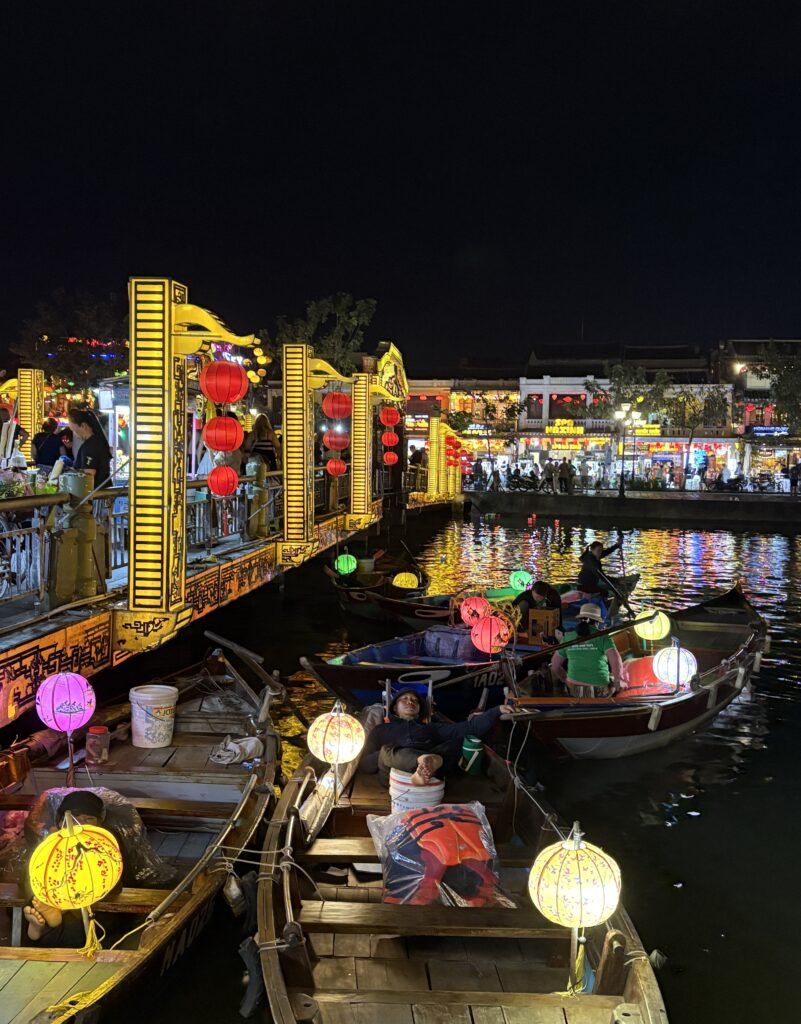
Hoi An’s river is the heartbeat of the city, and when the sun sets, it turns into a glowing dreamscape of reflections, floating lanterns, and camera-snapping tourists (don’t worry, you’ll be one of them).
Hop aboard a small wooden sampan boat, usually rowed by a friendly local woman in a conical hat, and float down the Thu Bon River under a sky of lanterns.
You’ll pass by candlelit temples, restaurants twinkling on the banks, and other boats setting off with flickering offerings. By the way, watch out for boat ride scams in Hoi An, where you’re charged inflated prices!
It’s touristy? Sure. But it’s also absolutely magical. If there’s one “classic” thing to do in Hoi An at night, this is it. Just don’t forget to make a wish when you release your lantern.
Stroll Through the Bustling Morning Market
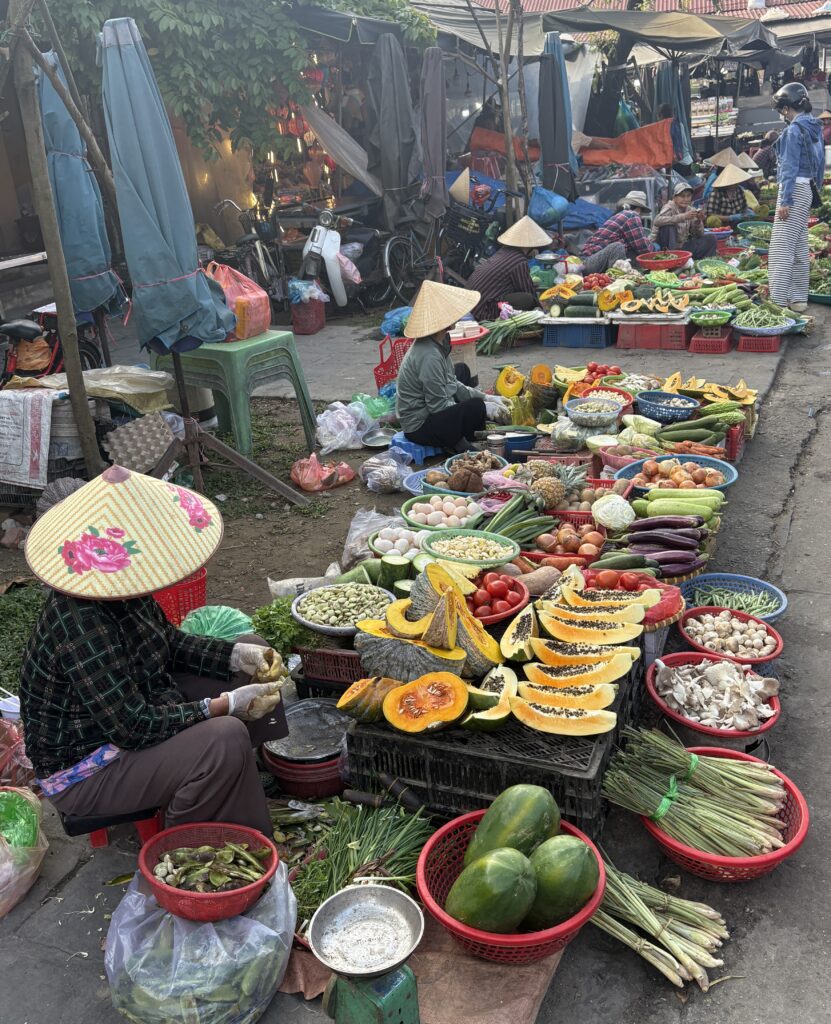
Hoi An’s morning market is where the town wakes up. While most tourists are still snoozing, this riverside maze of stalls is already alive with clinking coffee cups, calls of “banh mi!” and endless rows of fresh herbs, seafood, and tropical fruit stacked high.
You’ll see locals shopping for their daily meals, vendors chopping and prepping in real time, and some powerful Vietnamese coffee being brewed right on the street.
If you’re a fan of chaotic beauty and sensory overload (in the best way), this is a must-do. It’s also the perfect place to try breakfast dishes like cao lau or xoi that don’t always make it to restaurant menus later in the day.
Bring small bills and a camera, and if you want to really immerse yourself, consider pairing it with a food tour or cooking class afterward.
Cruise Coconut Forests in a Traditional Basket Boat
Just a short ride from town in the Cam Thanh area, you’ll find a quieter side of Hoi An, where water palms line the canals and locals still fish with traditional methods. And the best way to see it? From a round, bamboo basket boat.
These unique little boats (called thung chai) were once used to evade French taxes, but now they’re an iconic part of the Hoi An experience.
Gliding through the narrow waterways of the so-called “Coconut Forests” gives you a peaceful break from the buzz of the Old Town. Most tours are led by friendly locals who might even throw in a few tricks, think spinning boats or basket net demos.
It’s half relaxing, half “how is this thing floating?” But either way, it’s a memorable glimpse into the coastal culture that shaped this region.
Go on a Guided Hoi An Street Food Tour

Hoi An isn’t just beautiful, it’s delicious. One of the best ways to experience the town’s culinary magic is through a guided street food tour.
You’ll walk (and eat) your way through hidden alleyways, roadside stalls, and family-run joints you’d never find on your own.
Expect local favorites like banh mi, cao lau, white rose dumplings, and maybe even some grilled frog legs if you’re feeling brave. The best part? These tours are usually led by passionate locals who’ll explain not just the food, but the culture behind it.
This is a top-tier “first night” activity to get your bearings and fill your stomach.
Snorkel or Dive on a Cham Islands Day Trip
Just off the coast of Hoi An lies the Cham Islands, a small archipelago renowned for its crystal-clear waters, vibrant coral reefs, and laid-back island atmosphere.
While you can hop over for a beach day, most travelers come to snorkel or dive.
Tour operators run full-day trips that include hotel pickup, boat transfers, lunch on the beach, and time to explore or swim.
Marine life is most abundant between March and September, when visibility is at its highest. You don’t need to be certified to enjoy snorkeling, but there are also proper dive packages for those looking to go deeper.
It’s a salty, sunny change of pace from the temples and lanterns, and a reminder that Hoi An isn’t just inland charm.
Ride the Cable Car to Ba Na Hills and the Golden Bridge
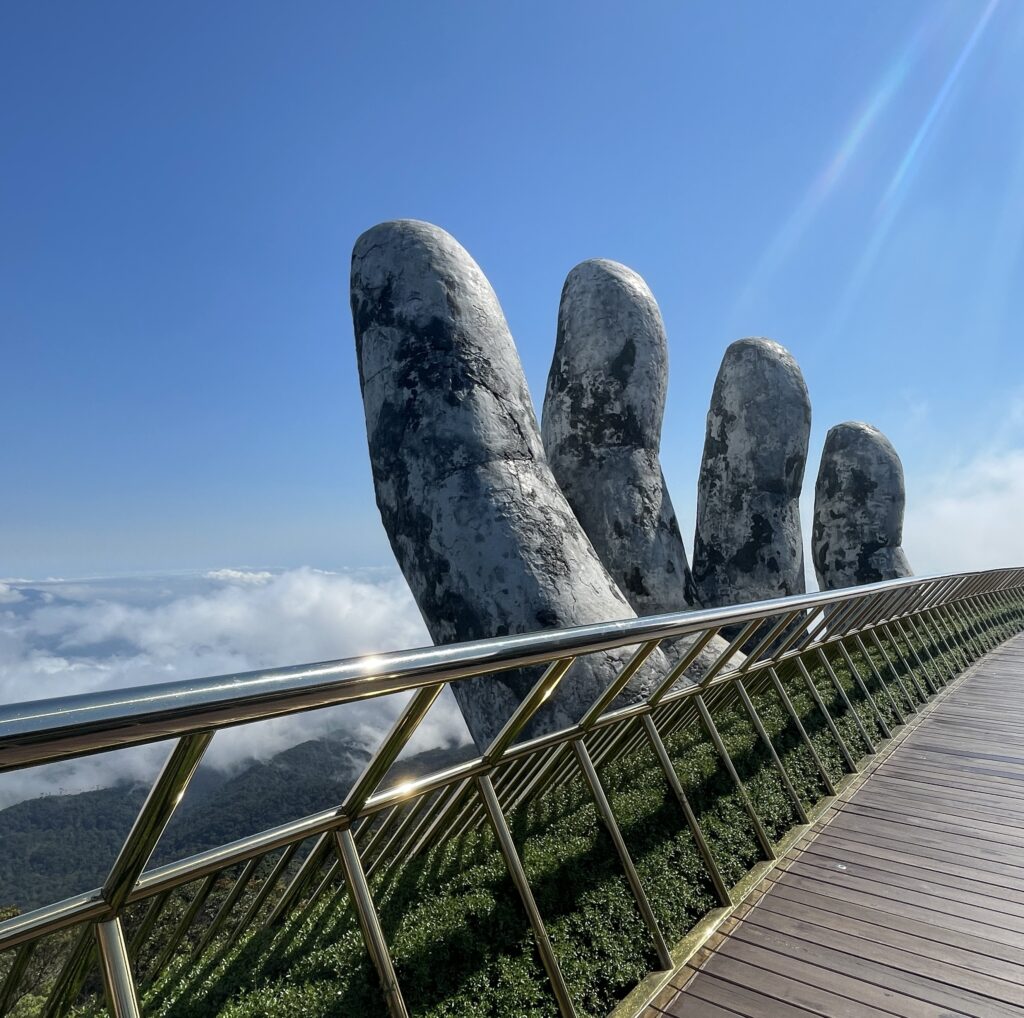

While it’s technically in Da Nang, Ba Na Hills is one of the most popular day trips from Hoi An, and for good reason.
Between the record-breaking Ba Na Hills cable car, French-style mountain village, and that ultra-Instagrammable Golden Bridge held up by stone hands, it’s easy to see the appeal.
The views are stunning, the air is cool, and while it’s definitely touristy, it’s one of those “you kind of have to see it” attractions.
If you’re not renting a scooter or car, tour operators run frequent day trips. Just don’t expect much of a laid-back activity. Ba Na Hills is no hidden gem.
Make Your Own Hoi An Lantern in a Hands-On Workshop
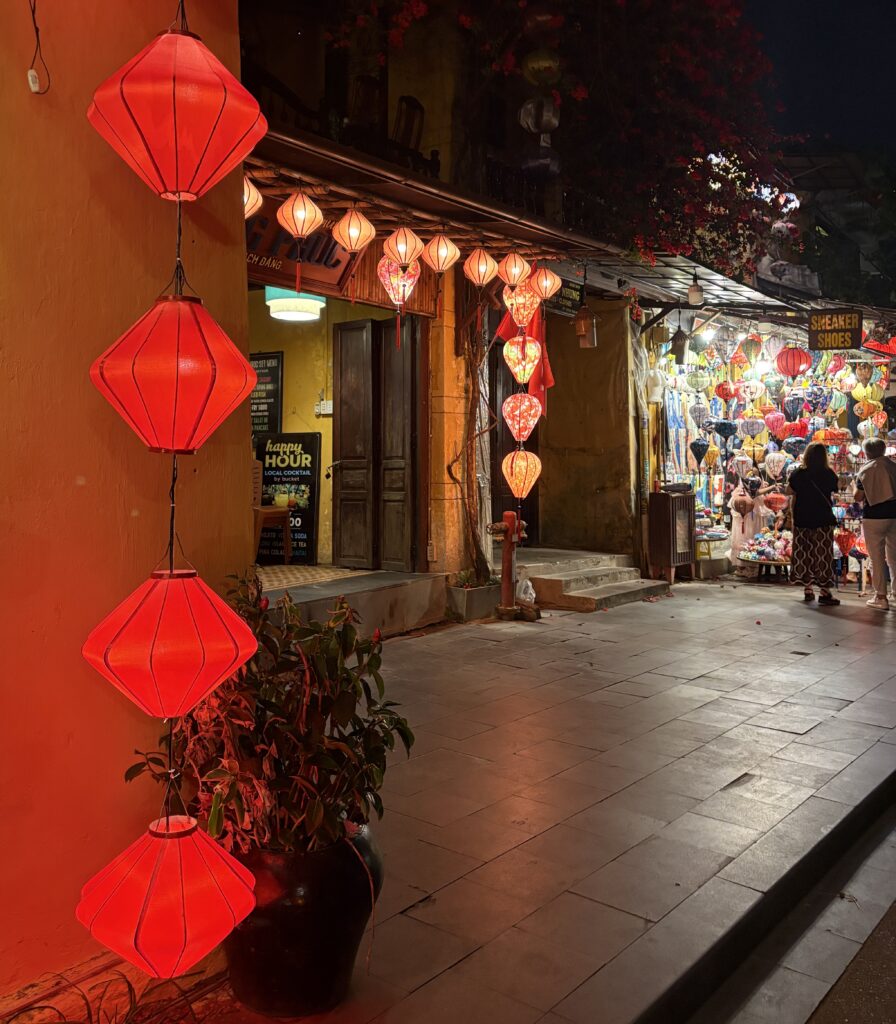
Lanterns are basically the symbol of Hoi An, so why not make your own?
Dozens of lantern-making classes around town will walk you through the process of choosing a frame, stretching the silk, and creating a glowing souvenir to take home.
Most workshops take 1–2 hours and are surprisingly beginner-friendly.
It’s one of the more relaxing cultural activities and a great way to break up your sightseeing. Plus, the photo ops? Worth it alone.
Take a Cyclo Tour Through Hoi An Ancient Town
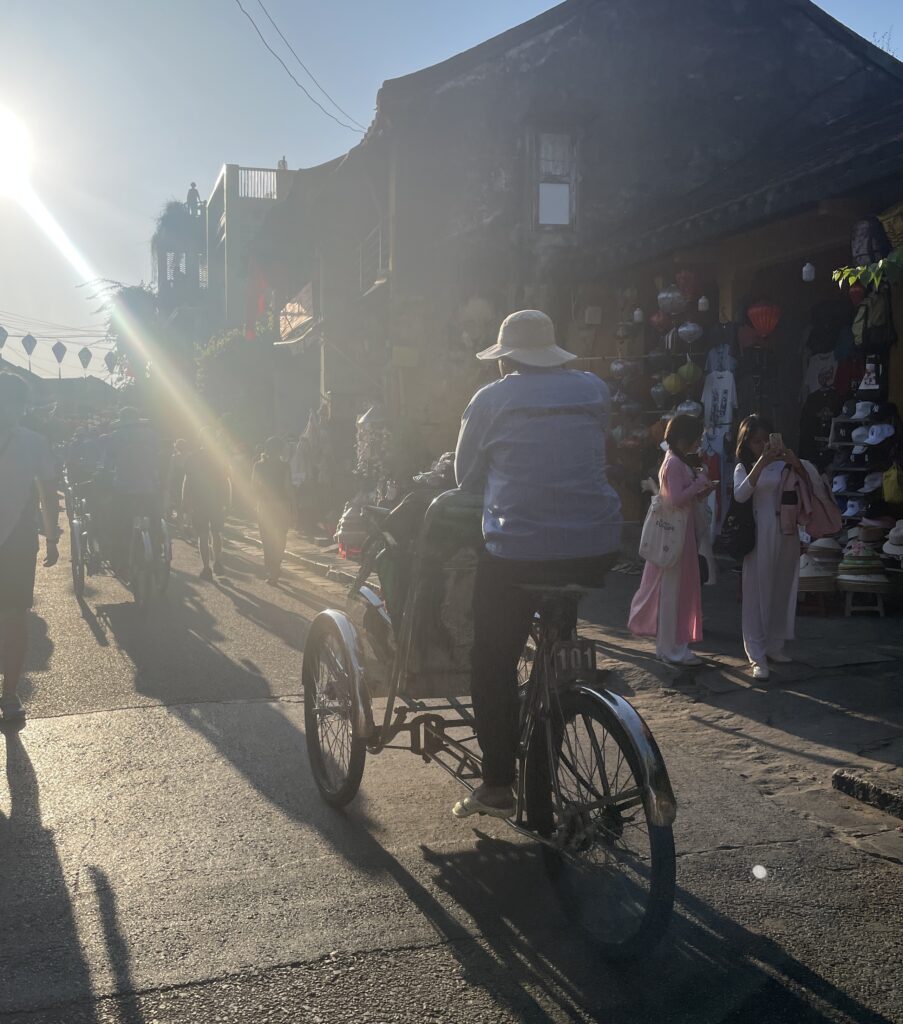
Sure, you could walk, but hopping in a cyclo (a three-wheeled bicycle taxi) is a fun, slightly retro way to see Hoi An’s Old Town.
These pedal-powered rides are slow-paced and scenic, taking you past temples, colonial buildings, and quiet side streets at just the right speed.
Many drivers offer guided commentary, and it’s a low-energy option for those humid afternoons when your feet need a break. Just be sure to agree on the price upfront.
It’s a quirky, classic Southeast Asia moment that still fits right into Hoi An’s vibe.
Visit the Historic Japanese Covered Bridge
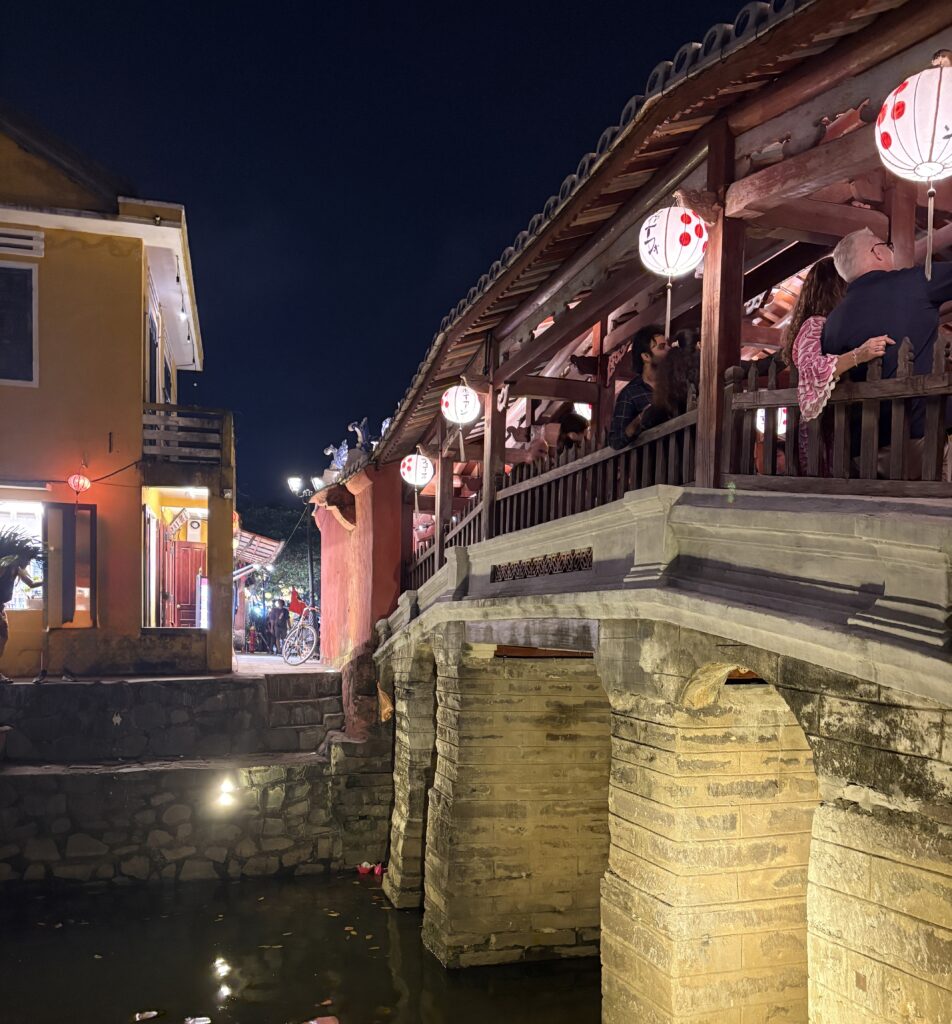
You can’t walk more than a few blocks in Hoi An without seeing a postcard of the Japanese Covered Bridge, and yes, it’s worth visiting in person.
Built in the 1590s to connect the Japanese and Chinese quarters of the city, this arched wooden bridge is both symbolic and photogenic.
Visit early in the morning to beat the crowds (and the heat), and take a few minutes to appreciate the temple built into the bridge itself. It’s small, but one of those rare “lived history” spots that Hoi An does so well.
Unwind with a Secret Cocktail-Making Experience
Tired of tourist bars? Treat yourself to a cocktail-making class, not just a drink, but an experience.
Some of Hoi An’s coolest lounges and speakeasies offer private workshops where you’ll shake, stir, and sip under expert guidance.
Many incorporate Vietnamese herbs, tropical fruits, and even traditional spirits into the mix, giving you an authentic taste of local flair.
Great for groups or couples, it’s an elevated (and boozy) way to close out your day of exploring.
Shop for Tailored Clothing and Leather Goods
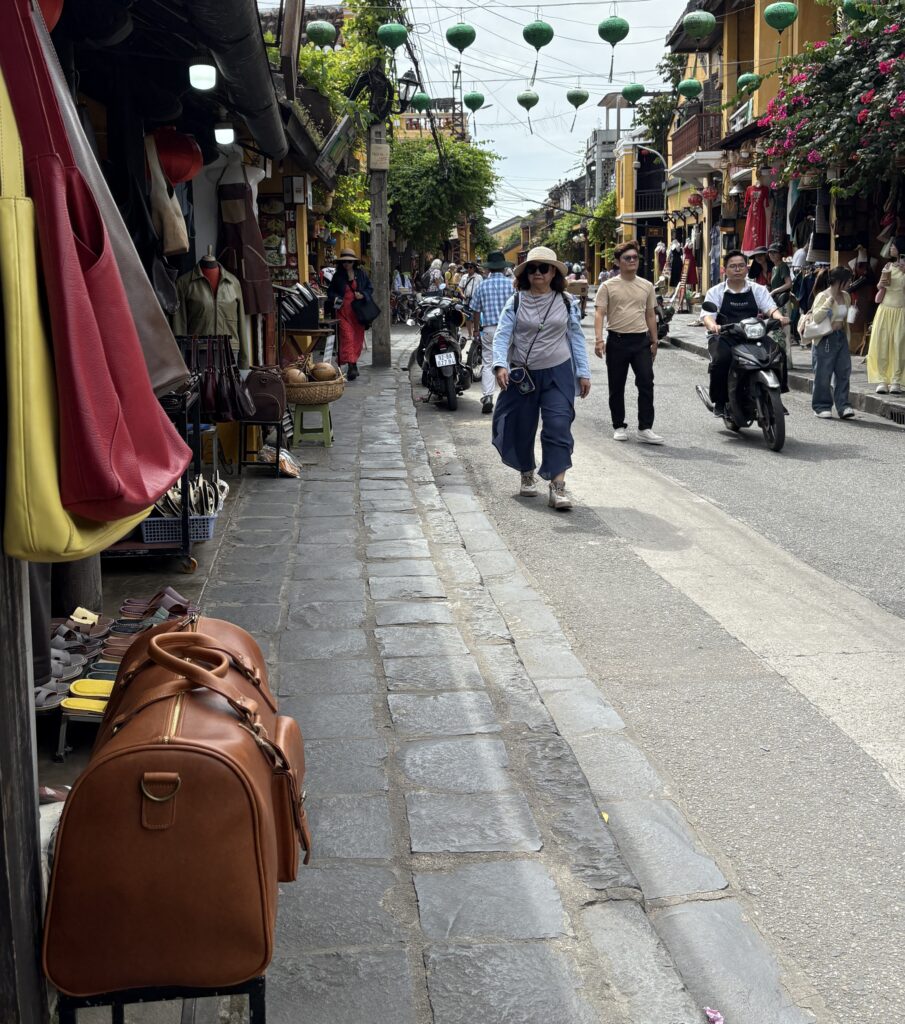
Hoi An is a tailoring mecca. From suits and dresses to buffalo leather bags, custom sandals, and linen shirts, if you’ve got a Pinterest board or favorite fit, it can be made here, often in just 24–48 hours.
The process typically involves selecting your fabric, being measured, and returning for one or two fittings.
There are literally hundreds of tailor shops, so do your research (or ask your accommodation for a trusted recommendation). And yes, bargaining is expected!
Just make sure you leave room in your suitcase. You’ll probably end up with more than you planned.
Join a Full-Day Tour to Hue’s Imperial City

Got room for one big cultural day trip? Hue is your move. Located a few hours north, this former imperial capital is packed with history: the moated Imperial City, royal tombs, pagodas, and the Perfume River all make it feel worlds away from Hoi An’s laid-back charm.
Guided day tours make it easy, offering hotel pickup, transport over the Hai Van Pass, and deep dives into Vietnam’s royal past. If you’re a fan of temples, architecture, or history, this one delivers.
Explore Hoi An’s Art Galleries and Handicraft Shops
From intricate woodwork to modern Vietnamese painting, Hoi An’s art scene is easy to miss, but absolutely worth exploring.
Dotted around the Old Town are galleries that support local artists and showcase regional talent, many of which feature surprisingly affordable works.
You’ll also find plenty of handcrafted goods: bamboo products, woven mats, silk lanterns, and more.
It’s a refreshing alternative to mass-produced souvenirs, and a great way to support the creative side of this ancient town.
Snap Photos at the Iconic Yellow Buildings of Old Town
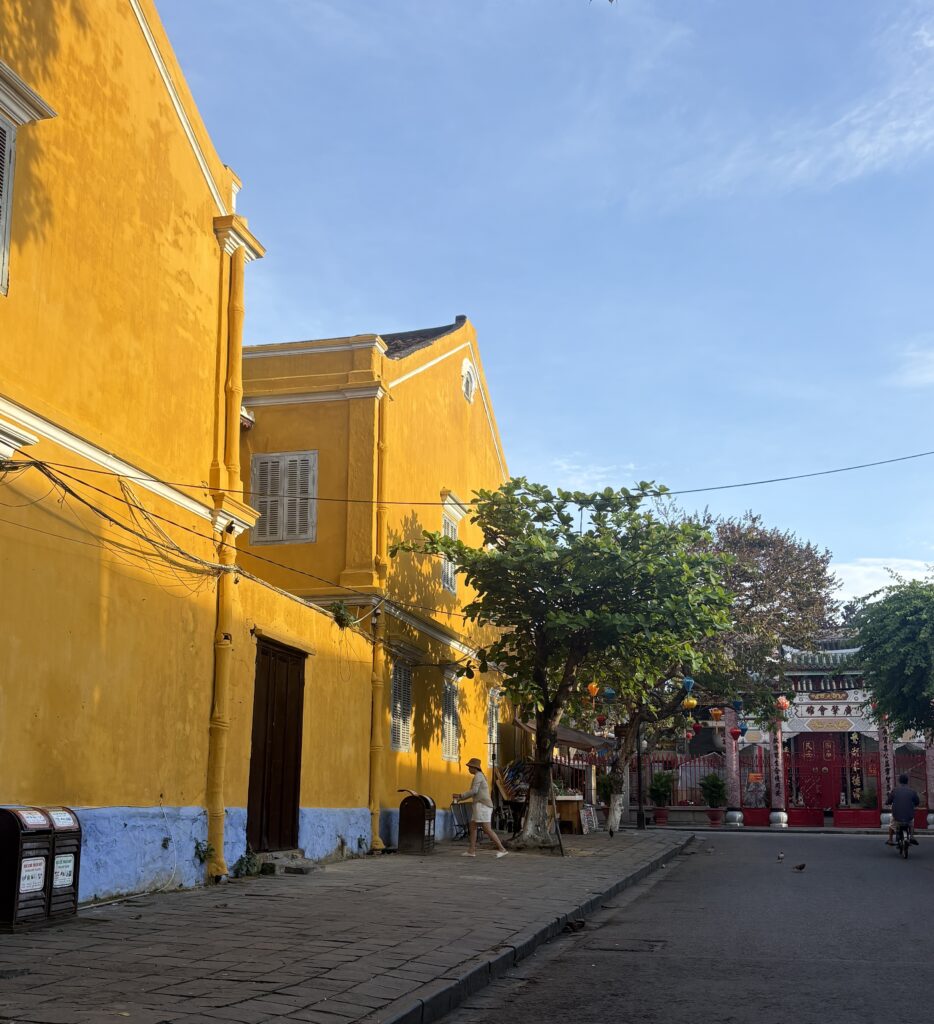
Hoi An’s golden yellow buildings are more than just a backdrop, they’re part of the town’s identity.
Originally painted with lime mixed with local ingredients for weather protection, these colonial-era facades now serve as a photo dreamscape.
Wander through during golden hour, when the light hits just right, and you’ll understand why so many travel photographers are obsessed with this place.
Head to Tran Phu or Le Loi streets for some of the most photogenic corners. Just remember to be respectful, many are still homes or active businesses.
And if this kind of charm speaks to you, Hanoi offers its version of moody streets and photogenic chaos, check out the best things to do in Hanoi.
Soak in the Buzz at Hoi An’s Night Market
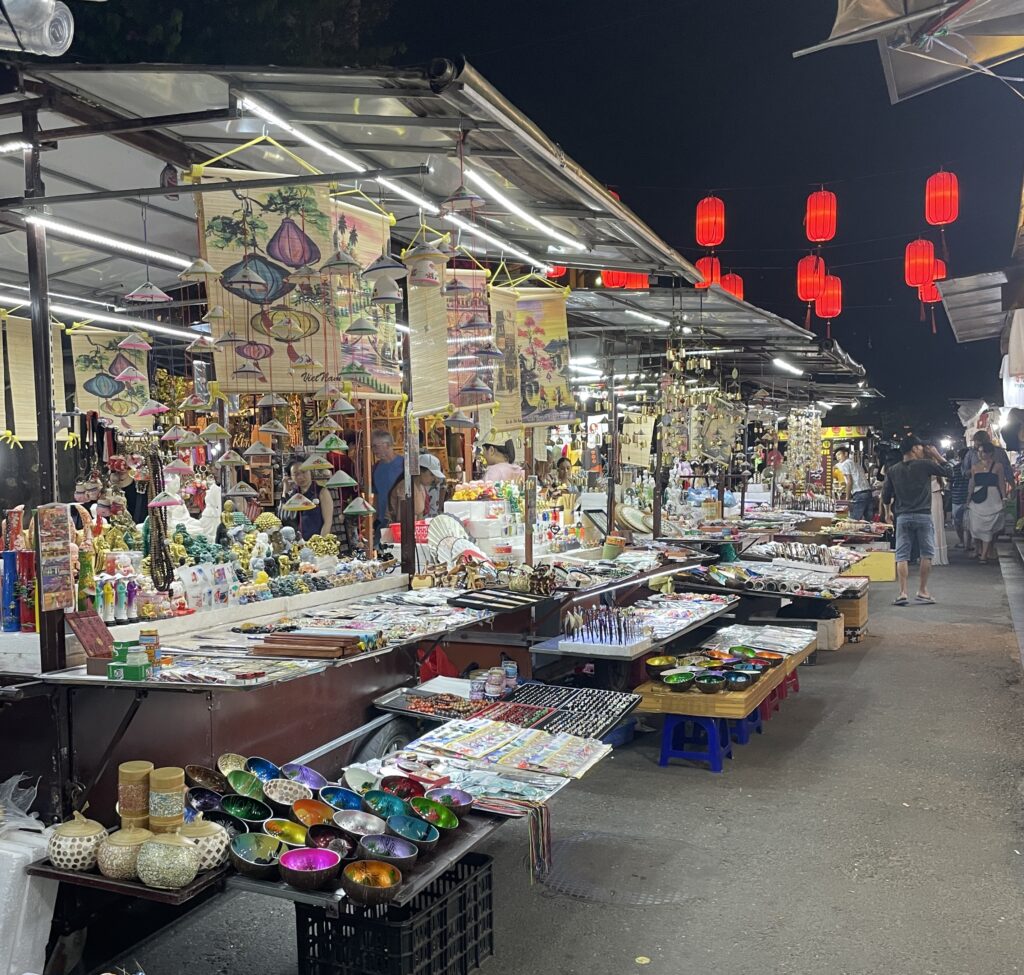
Once the sun sets and the lanterns start glowing, the Hoi An Night Market kicks into full swing.
Located on An Hoi Island (just across the bridge from the Old Town), it’s packed with street food vendors, glowing lanterns for sale, handmade trinkets, and plenty of bustle.
Grab a grilled skewer, hunt for a souvenir, or just soak in the vibe with an iced sugarcane juice in hand.
It’s touristy, sure, but it’s also fun. And after a long day of exploring, wandering here without any plan might be the best way to end your night.
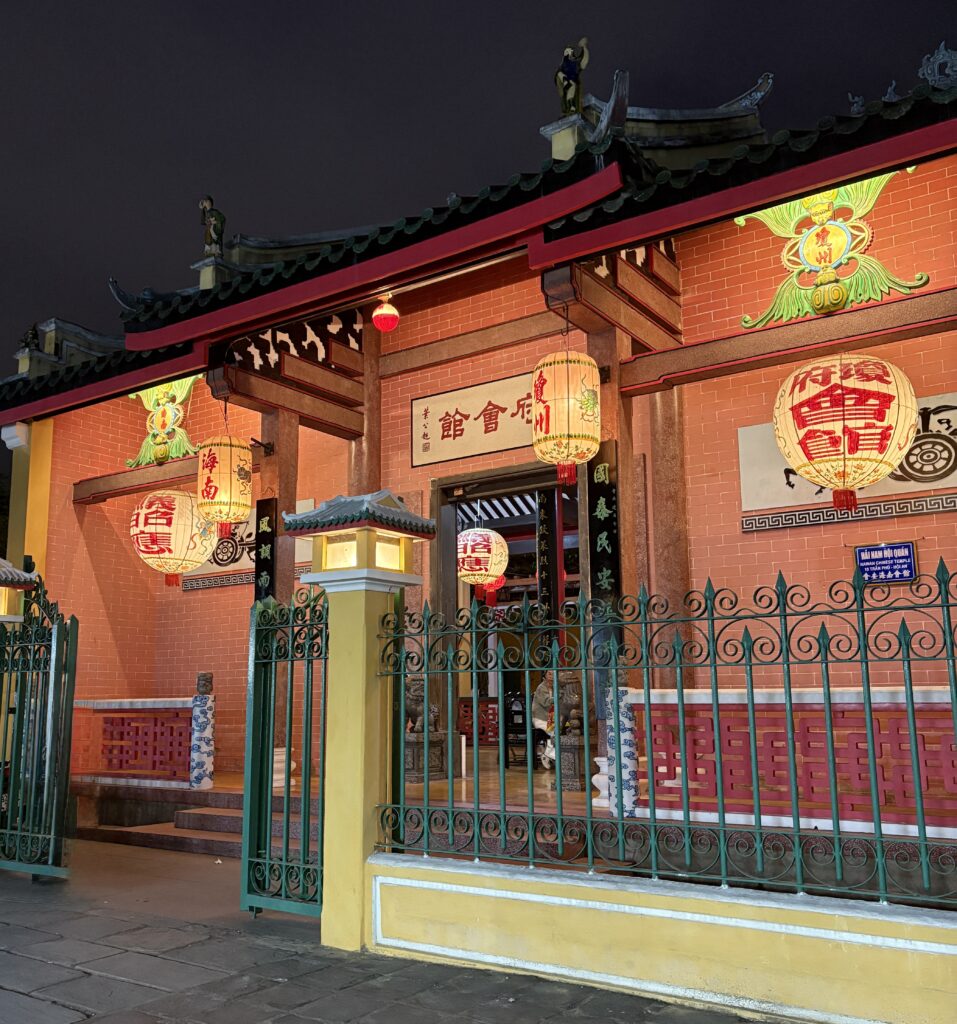
Getting Around Hoi An
Hoi An’s charm lies in its size; it’s small enough to explore with ease, but diverse enough to make getting around part of the adventure.
Whether you’re zipping between beach and town or just cruising the lantern-lit streets, transportation here is refreshingly straightforward, especially if you avoid the most common Vietnam tourist mistakes.
- Walking: If you’re staying near Ancient Town, your feet are your best friend. Much of the Old Town is pedestrian-only, especially in the evenings. It’s one of the rare places in Vietnam where walking feels easy and peaceful.
- Biking: Many hotels offer complimentary bikes, and this is hands-down the best way to explore the outskirts, think Cam Chau’s rice fields or the back roads to An Bang Beach. Flat roads and little traffic make for easy pedaling.
- Grab App (or Taxis): For anything too far to bike, Grab works reliably and is very affordable. You can request cars or motorbike taxis, and services operate 24/7, great news for late-night arrivals or early morning excursions.
- Electric Shuttles: These appear in Old Town as quiet and scenic ride options. Great if you’re tired or want to get dropped off near your hotel after a long stroll.
- Private Drivers & Tours: If you’re heading out to My Son Sanctuary or taking a day trip to Hue, booking a private driver or joining a small group tour is the most efficient way to go.
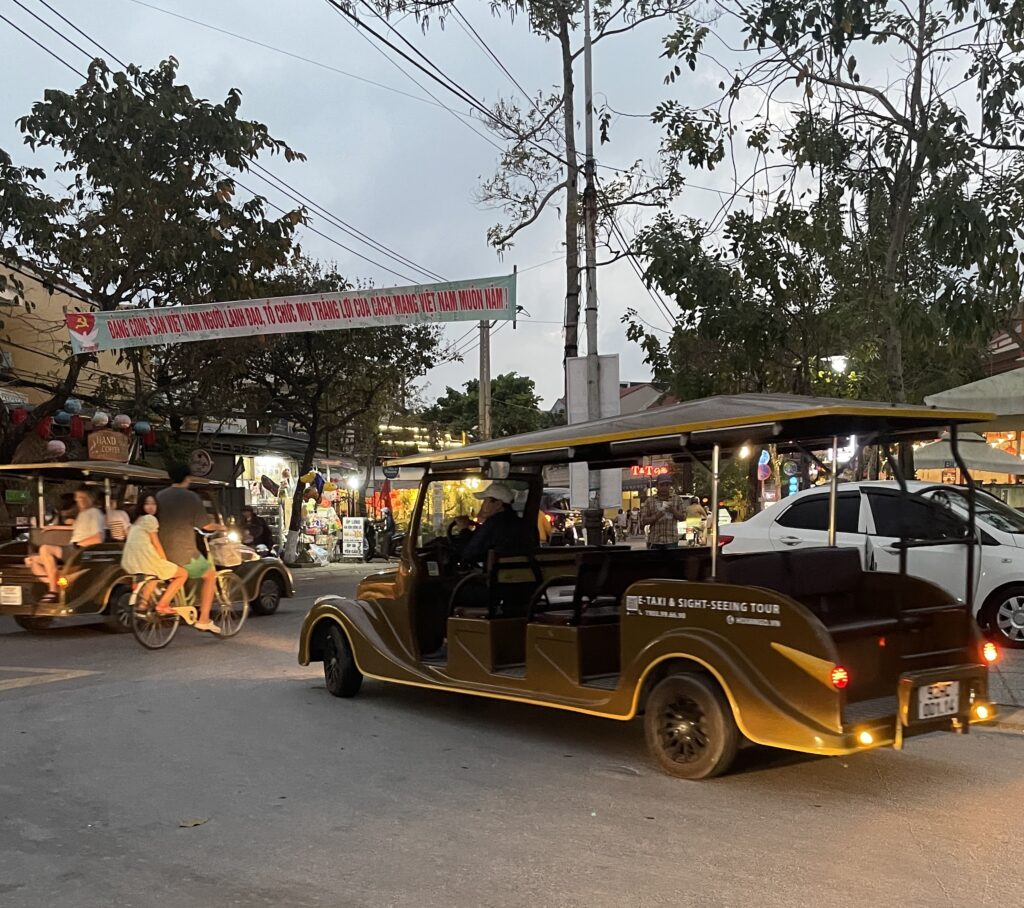
What to Buy in Hoi An
One of my favourite things about Hoi An is that it’s a shopper’s paradise — not in a chaotic mall sense, but in that “how did I end up buying three tailored suits and a lantern?” kind of way.
It’s easily one of the best spots to explore when you’re looking for unique things to buy in Vietnam.
Every visit, I’ve purchased a few items for myself, family, and friends, custom clothing for myself, and leather goods for others. It’s hard to visit Hoi An and not shop!
Local craftsmanship, fashion, and food all shine here. If you’re thinking about souvenirs or just indulging your inner shopaholic, here’s what’s worth your dong:
- Tailored Suits & Dresses: Hoi An’s tailors are known across Asia for fast, high-quality suits, formal dresses, and structured pieces. You’ll find hundreds of shops ready to custom-make outfits in under 48 hours.
- Custom Linen & Cotton Clothing: Looking for something light and breezy? Many tailors also specialize in casual wear, such as linen shirts, flowy pants, and summer-ready cotton sets. Most places have massive books of both modern and vintage designs to choose from.
- Buffalo Leather Goods: From bags to belts to wallets, you’ll find soft, durable leather items handcrafted right in town. Ask about the origin and smell the real stuff.
- Lanterns: These colorful handmade lanterns are a classic Hoi An souvenir and make great gifts. They’re not just pretty, they carry a bit of prestige, too. Saying it’s from Hoi An adds weight, like buying handcrafted fans or chopsticks in Kyoto. Some shops even offer DIY workshops for those who want to create their own.
- Cao Lau & Local Snacks: Many stores sell packaged versions of this local noodle specialty, along with chili sauces and teas, perfect for food lovers looking to bring home a taste of Hoi An.
- Handicrafts & Artwork: Explore the galleries for a diverse range of wood carvings, paintings, and embroidery. Much of it is made by local artisans and reflects the region’s heritage.
- Jewelry & Accessories: You’ll see plenty of silver, gemstone, and costume jewelry on display. Many shops will customize pieces to your liking.
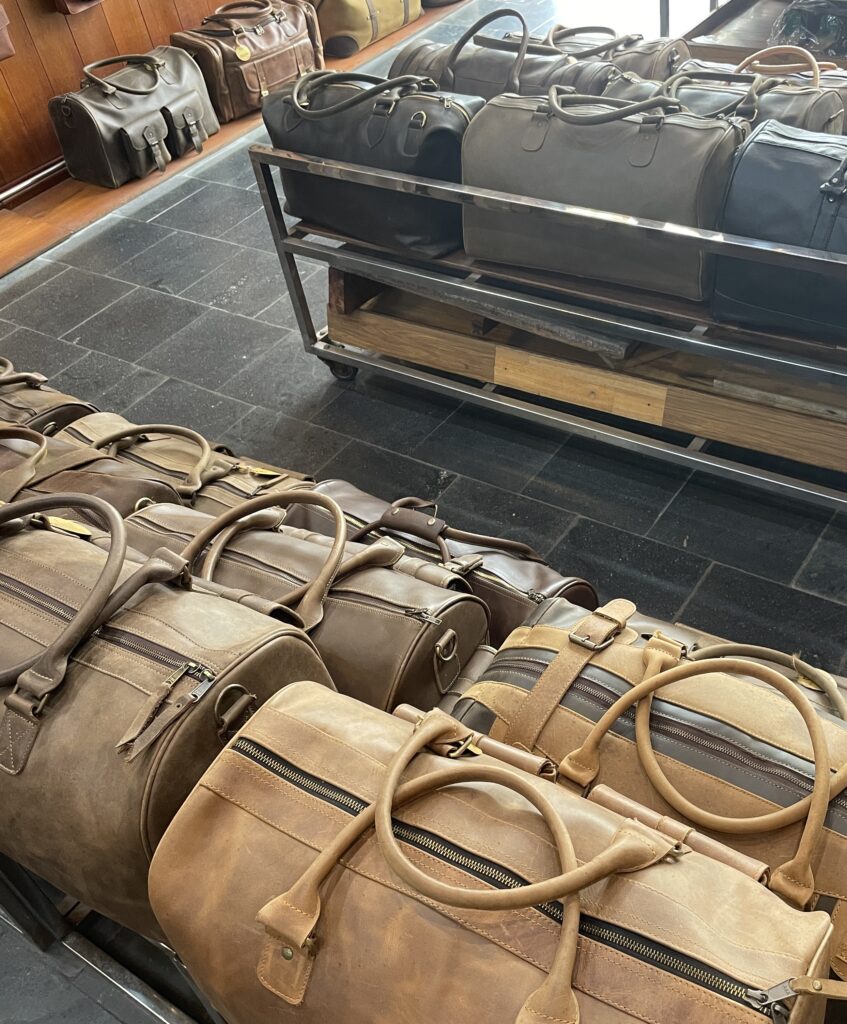
What to See in Hoi An: Wrapping It Up
There’s something undeniably magnetic about Hoi An, a place where your experience can feel deeply local or overly touristy, all depending on how you choose to explore it.
Wander the lantern-lit streets after 5 PM and you’ll find the crowds. But rise early, hop on a bike, and you’ll discover a quieter, more authentic rhythm to this riverside town.
I always make time for a peaceful morning ride through Cam Thanh, a lazy coffee near the market, and a few too many food stalls in the night market.
There’s a richness to daily life here that’s easy to fall into, whether you’re floating in a basket boat or getting fitted for a custom cotton shirt.
Hoi An rewards you for slowing down. It’s the kind of place where little moments leave a big impression, and where every turn offers something to see, taste, or try.
It may be just one stop on your Vietnam route, but for many, it’s the place they end up remembering most.
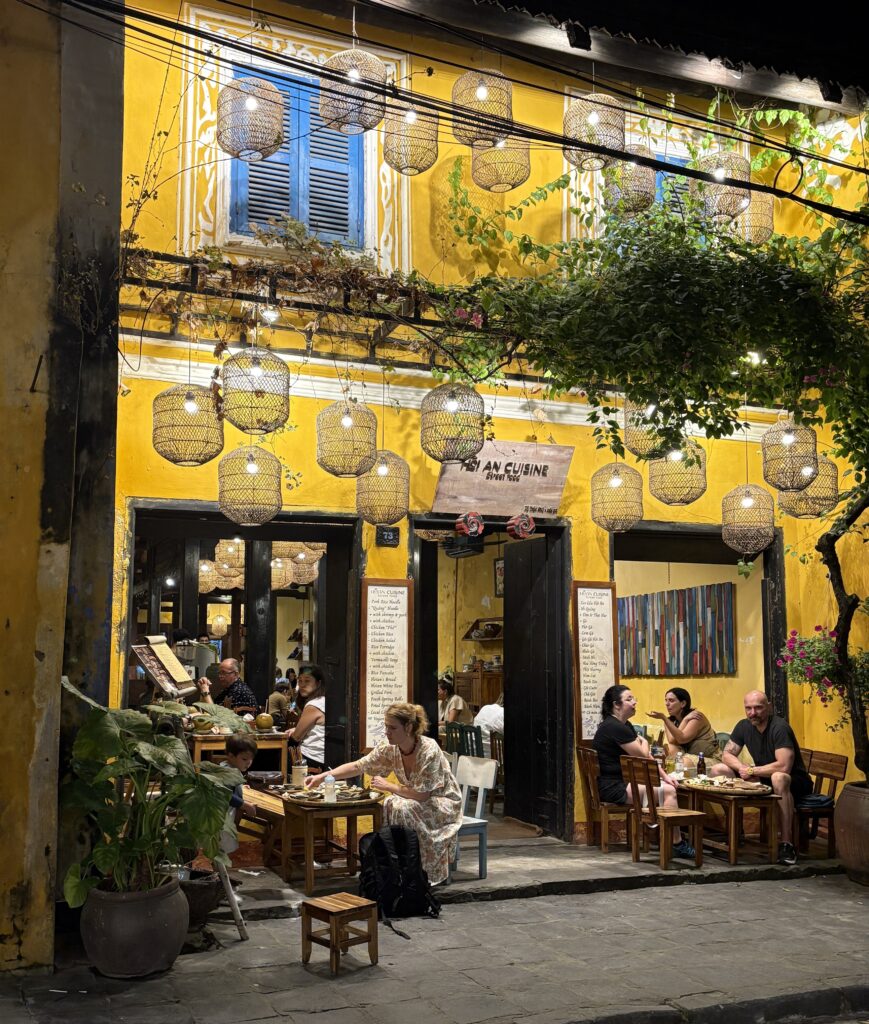
What are the best things to do in Hoi An at night?
Hoi An truly comes alive after dark. Watch the lanterns float along the river, explore the buzzing night market on An Hoi Island, or grab a drink with live music in a tucked-away bar.
It’s calm, colorful, and the perfect way to end a day in town.
Is Hoi An good for solo travelers?
Yes, it’s perfect for solo travelers. The town is safe, walkable, and full of friendly faces.
With cooking classes, group tours, and laid-back cafés, it’s easy to meet people or enjoy some solitude. Plus, biking solo through the countryside is as peaceful as it gets.
What’s the best time to visit Hoi An?
February to April offers the best weather, with mild temperatures, low rainfall, and festive vibes. It’s also when the Lantern Festival shines brightest.
May to August is hotter, but great for the beach and fewer crowds if you can handle the heat.
Can you swim at the beaches in Hoi An?
Yes, but be selective. An Bang Beach is your best bet for calm water and soft sand, while Cua Dai can be more exposed and occasionally rough.
Always check local flags or signs for safe swimming zones, especially during stormy seasons.

